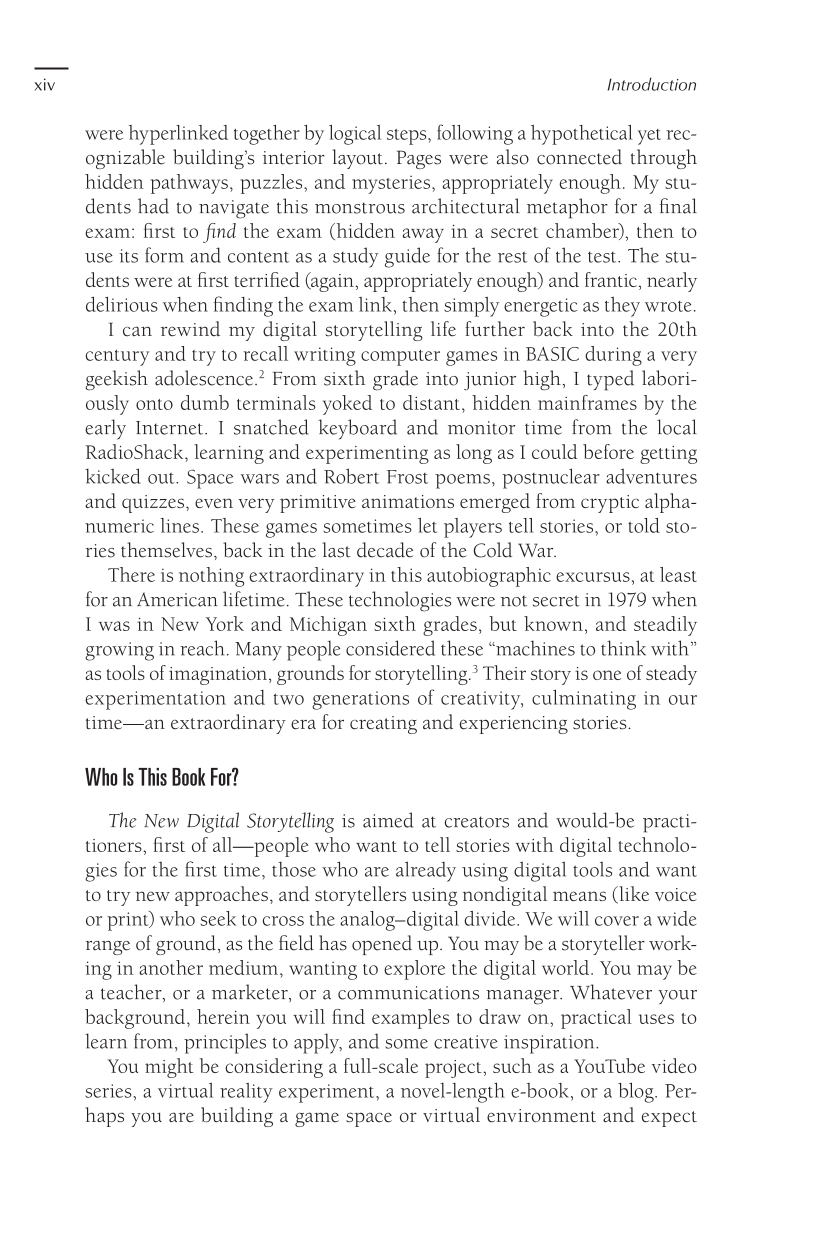xiv Introduction
were hyperlinked together by logical steps, following a hypothet i cal yet rec-
ognizable building’s interior layout. Pages were also connected through
hidden pathways, puzzles, and mysteries, appropriately enough. My stu-
dents had to navigate this monstrous architectural metaphor for a final
exam: first to find the exam (hidden away in a secret chamber), then to
use its form and content as a study guide for the rest of the test. The stu-
dents were at first terrified (again, appropriately enough) and frantic, nearly
delirious when finding the exam link, then simply energetic as they wrote.
I can rewind my digital storytelling life further back into the 20th
century and try to recall writing computer games in BASIC during a very
geekish adolescence.2 From sixth grade into junior high, I typed labori-
ously onto dumb terminals yoked to distant, hidden mainframes by the
early Internet. I snatched keyboard and monitor time from the local
RadioShack, learning and experimenting as long as I could before getting
kicked out. Space wars and Robert Frost poems, postnuclear adventures
and quizzes, even very primitive animations emerged from cryptic alpha-
numeric lines. These games sometimes let players tell stories, or told sto-
ries themselves, back in the last decade of the Cold War.
There is nothing extraordinary in this autobiographic excursus, at least
for an American lifetime. These technologies were not secret in 1979 when
I was in New York and Michigan sixth grades, but known, and steadily
growing in reach. Many people considered these “machines to think with”
as tools of imagination, grounds for storytelling.3 Their story is one of steady
experimentation and two generations of creativity, culminating in our
time—an extraordinary era for creating and experiencing stories.
Who Is This Book For?
The New Digital Storytelling is aimed at creators and would-be practi
tioners, first of all—people who want to tell stories with digital technolo-
gies for the first time, those who are already using digital tools and want
to try new approaches, and storytellers using nondigital means (like voice
or print) who seek to cross the analog–digital divide. We will cover a wide
range of ground, as the field has opened up. You may be a storyteller work-
ing in another medium, wanting to explore the digital world. You may be
a teacher, or a marketer, or a communications manager. Whatever your
background, herein you will find examples to draw on, practical uses to
learn from, principles to apply, and some creative inspiration.
You might be considering a full-scale project, such as a YouTube video
series, a virtual reality experiment, a novel-length e-book, or a blog. Per-
haps you are building a game space or virtual environment and expect

































































































































































































































































































































